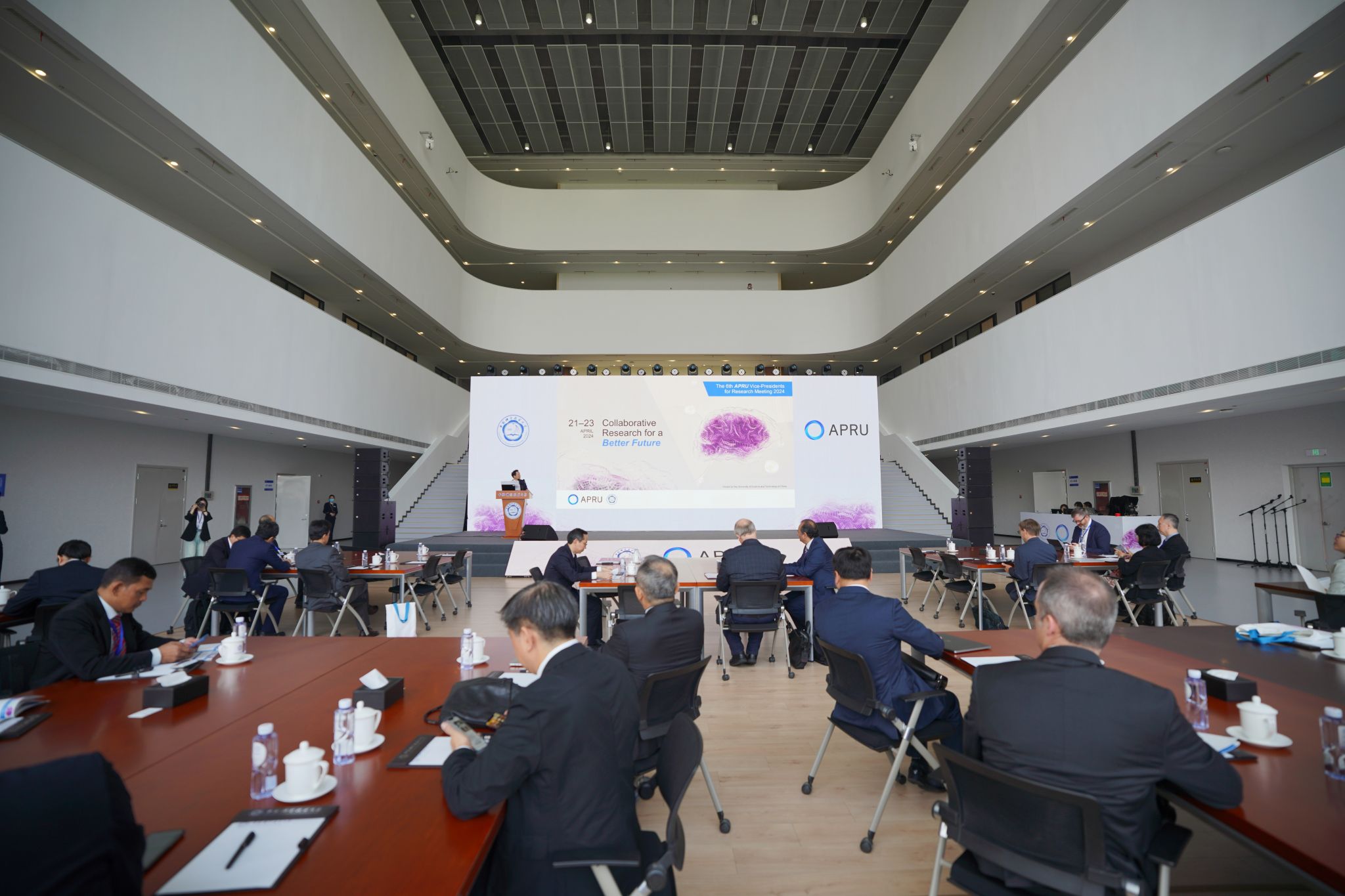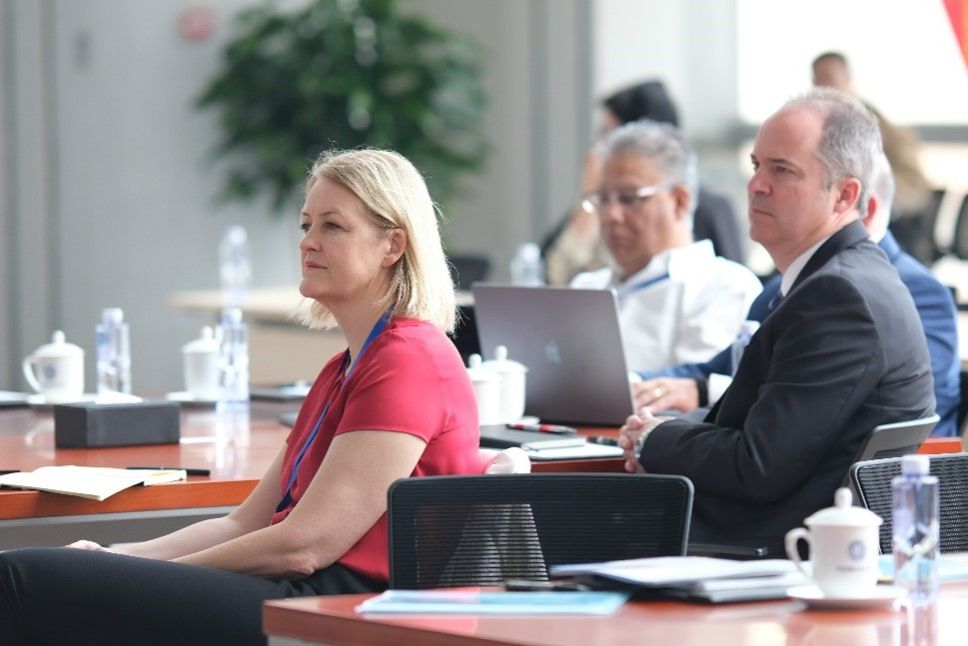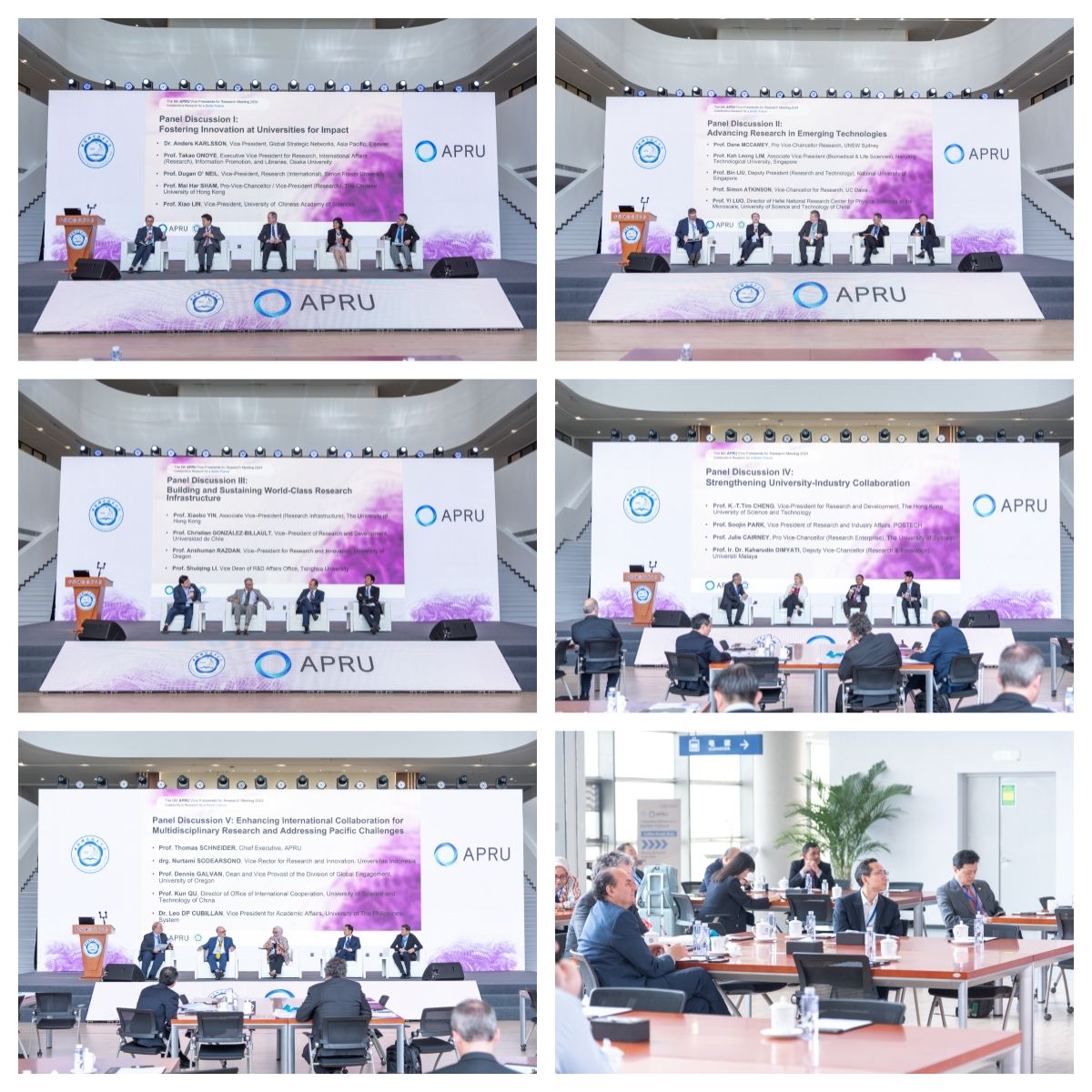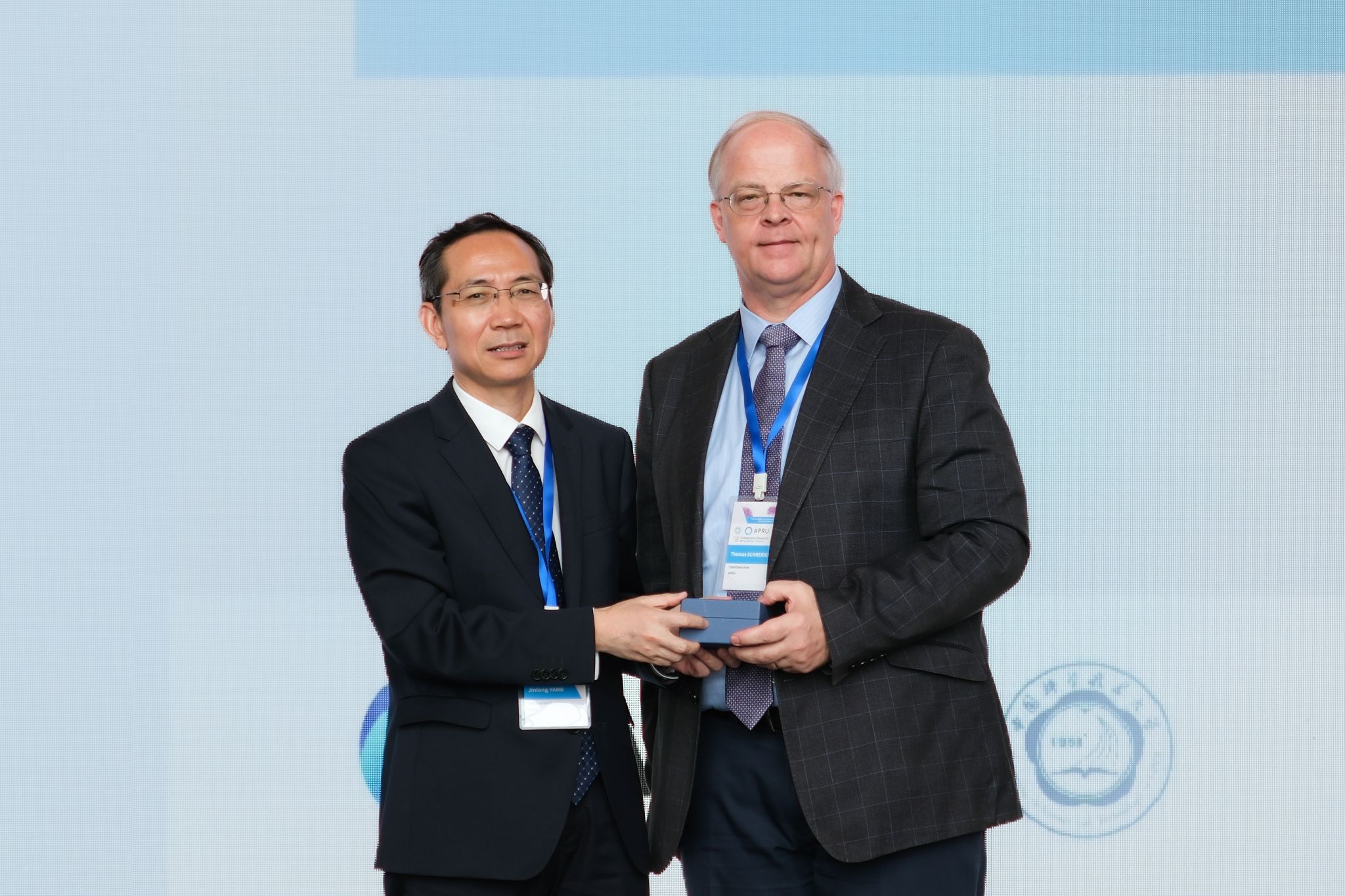How is University of Science and Technology of China (USTC) working to pool all the insightful ideas to better serve our world and benefit people in the future? What do professors from Association of Pacific Rim Universities (APRU) propose to realize collaborative research? What areas and methods are highlighted and worth paying particular attention to?
These are all discussions covered at the 6th APRU Vice Presidents for Research Meeting held on April 21-23, 2024 in Gaoxin (high-tech) campus of USTC. The meeting invites vice-chancellors and distinguished professors from universities across the Asia Pacific, in particular, those who delve into the cutting-edge subjects to share their views on benefiting the world. The topics for panel discussions vary from emerging technologies to university-industry collaboration, offering a feast of wisdom to fuel innovation.

Attendant delivering the speech (Image by USTC)
The first panel focused on “improving university’s innovation and greater impact on industries”. A heated discussion was held among the panelist. “The discussion was quite lively. It is a positive message that universities are very adaptable”, said Dr. Karlsson from Elsevier.
At the panel discussion themed “advancing research in emerging technologies”, scientists explored the challenges and countermeasures faced in promoting research in emerging technological fields such as artificial intelligence, biotechnology and environmental technologies. Led by Prof. Dane McCamey of University of New South Wales (UNSW) Sydney, representatives from Singapore’s Nanyang Technological University, National University of Singapore, University of California Davis, and USTC shared the practices, strategies, and experience of their institutes in improving research capabilities, obtaining talent and funding. As Prof. Dane McCamey put it, "It's a challenging time for collaboration, but it turns out that good things did emerge." The discussion saw insightful and inspiring viewpoints featuring a consensus to promote collaborative research towards a brighter future.

Representatives listening to the speech (Image by USTC)
The third panel discussion concentrated on building and sustaining world-class research infrastructure. It was opened by Prof Xiaobo Yin, associate vice president of The University of Hongkong, sharing about the hope, the challenges and also the barriers in University of Hong Kong (HKU)’s infrastructure development. During the discussion part, participants also exchanged opinions on the upgrading and progress of the lab facilities, research centers, and computational platforms in faced with global change and the fast development of science and technology. “Postech has many research centers for AI, medical science and so on.” said Prof Soojin PARK from Postech, he also noted that not only the postgraduate students and researchers, but also undergraduate students in Postech will all benefit from the development of research centers.
In terms of strengthening industry-university research collaboration, representatives explored how universities can effectively collaborate with industry partners to co-create knowledge, drive innovation, and shape the future workforce. Particularly, Prof. Nurtami SODEARSONO from University Indonesia (UI) noted that, “We have established two models, one is the one institute-one institute model, and the other is the group collaboration which consists of several universities, including those from Australia and United Kingdom.”
In the last panel discussion “enhancing international collaboration for multidisciplinary research and addressing Pacific challenges”, researchers drew their attention to the role of APRU in advancing international academic collaboration, Thomas Schneider of APRU mentioned the dual focus of APARC in promoting interdisciplinary research was jointly explored, along with its new initiatives in addressing challenges specific to the Pacific region, such as food security and establishing forest stations.

The panel discussion (Image by USTC)
At the event, that diverse and talented group was made up of more than 48 community members representing more than 30 universities. More than 30 volunteers have taken part in this meeting.
The meeting not only strengthens the ties between member universities, but also provides a valuable platform for exchanges and cooperations in the development of higher education worldwide.

Photo of Vice President YANG Jinlong and Thomas Schneider of APRU (Image by USTC)
(Written and edited by HUANG Rui, interviewed by HUANG Rui, ZHAO Zheqian, CHEN Hang, CAI Guoyuan and WANG Yiheng, USTC News Center)